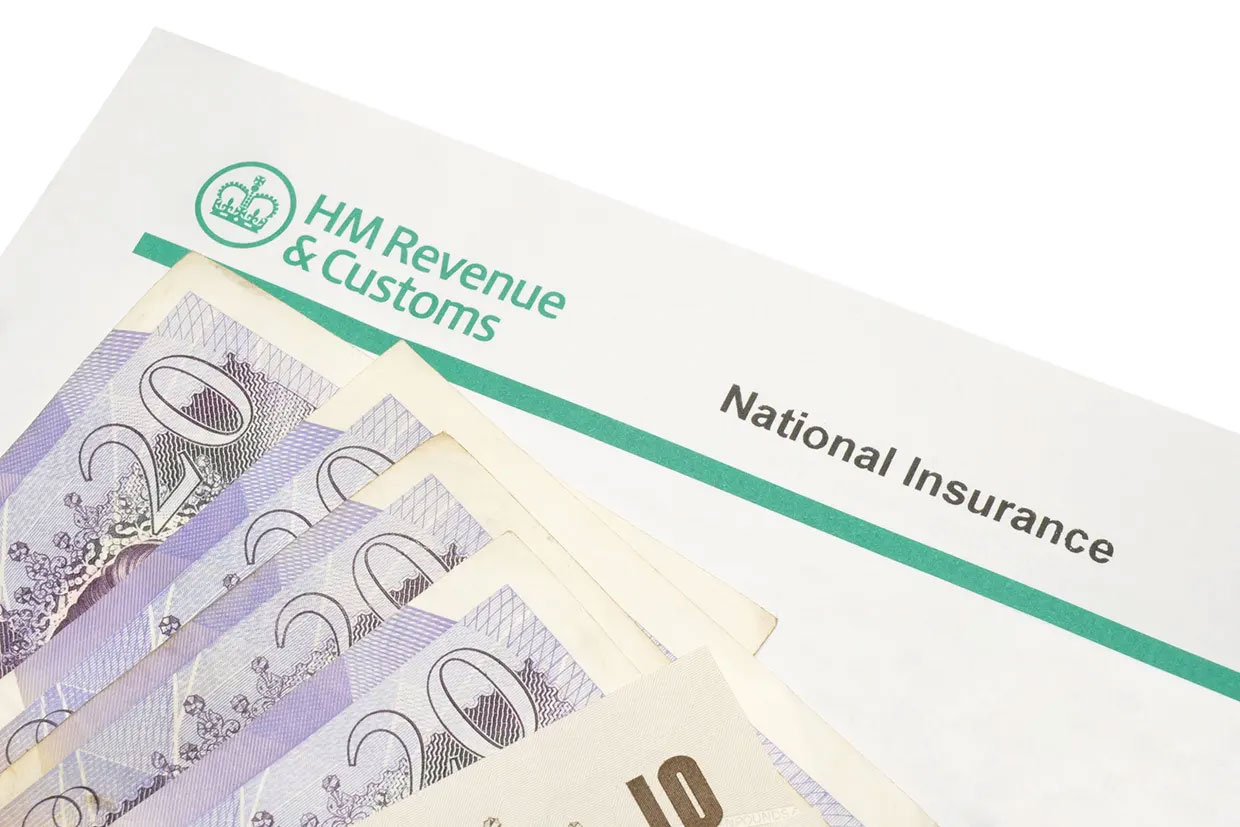National Insurance Contribution Increase
October 28th, 2021

UK Government announces plans to increase National Insurance Contributions to reduce strain on health and social care
National Insurance Contribution [NIC] rates are being increased to support the NHS and social care services. The Government has announced plans to raise National Insurance by 1.25% for one year only for employees, employers and the self-employed from April 2022. This will cover both Class 1 (employee and employer), Class 1A and 1B and Class 4 (self-employed) NICs. The tax increase will apply from 6 April 2022 to 5 April 2023 with plans to return to its current rate following this.
However, after returning to its current rate, the 1.25% increase will continue to be collected, being reclassified as a discrete new Health and Social Care levy. This increase will also be paid by pensioners that continue to work, unlike National Insurance.
National Insurance: Health and Social Care Tax
The National Insurance (NI) levy is paid by all UK earners, based on the quantum of their earnings. This rise relates to Class 1 NIC which applies to employees on payroll.
Employers also pay separate NICs for their staff, whilst self-employed workers pay two layers of NIC: a flat rate and a second charge based on their profits.
Currently, for Class 1 NIC, employees earning between £9,564 and £50,268 annually pay 12% NI. Those earning more than £50,268 pay 2% on additional payment above this. Those with an annual income under £9,564 however, do not pay any National Insurance.
Spending Plans
The reason these rates of 12% and 2% are being increased by 1.25% is initially to reduce the strain on the NHS. For the first year, the Government has stated that the money will be targeted at the deficit and lack of workers in the NHS, caused largely by the Covid-19 pandemic.
In the following three years, under its new guise as Health and Social Care levy, a portion is expected to be directed towards the social care system to help the elderly and those with special care needs.
The Government has predicted that the levy will raise £12bn a year. Slightly over £2bn per year is to be allocated to Scotland, Wales and North Ireland, with the UK Government restricting how it may be spent.
Of the remaining £10bn, it is intended that £5-6bn will go to the NHS and £1-2bn will go to social care every year. Of the money being allocated to social care, half will go towards a new model for funding to help people pay for care. The other half will go to training for staff and general improvement of health and care services.
Of the remaining funds, some will be allocated to provision of higher pay for employees of The Department of Health and Social Care and the NHS. This is to offset the tax rise employees will have incurred. Any balance left over is as yet unallocated.
Criticisms
Some have worried that the levy increase will have a detrimental impact on people with lower incomes. Due to the rate decreasing for earnings over £50,268, those in higher income positions may pay a lower percentage of their wages as NIC.
On the other side of the debate, the health care sector has expressed that the increased funding is insufficient and will not resolve the current raft of problems.
How much will this cost UK employees?
- If you earn £20,000 annually, you will pay £130 more per year
- If you earn £50,000 annually, you will pay £505 more per year
- If you earn £100,000 annually, you will pay £1,130 more per year
Care in England
The Government hopes that people resident in England will not pay more than £86,000 in care costs after October 2023.
Additionally, those whose assets are valued under £20,000 will have their care entirely paid by the state. People with assets valued between £20,000 and £100,000 will have their care subsidized.
Currently, local councils will only provide financial support to those who heavily require care and have assets worth less than £23,250, with full care being limited to those with assets worth under £14,250.
Care in Wales, Scotland and Northern Ireland
- In Wales, anyone eligible for care at home pays a maximum of £100 weekly
- In Northern Ireland, home care is paid for by the state for anyone over 75 years old
- In Scotland, personal care is free for those that need support at home. In care homes, care is free for people with assets worth less than £18,000 and is subsidized when assets are under £28,750. People with more assets must fund their own care, but receive a contribution of £193.50 a week for personal care and £87.10 for nursing care
To find out more about the effects of the NIC rate increase on your business and how to manage them, please feel free to contact Briars.
Copyright © 2024 Briars Group | All Rights Reserved | Read Our Cookie Policy
